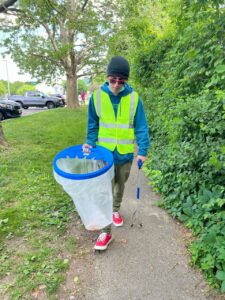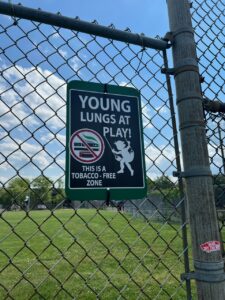Over the last few years, Onondaga County, like much of New York State, has seen a dramatic increase in opioid overdose fatalities, including 156 and 186 deaths in 2020 and 2021 respectively. Factors such as the proliferation of illicit fentanyl and fentanyl analogs, as well as their combination with methamphetamines, and cocaine, have driven this worsening crisis.
Through the Onondaga County Health Department ODMAP overdose tracking system, there has been notification of several significant spikes in overdose activity over the past two months. These reports have indicated 14 or more overdoses occurring in a 24-hour period, occurring as recently as two days ago. This appears to be linked to increased amounts of fentanyl in the drug supply. Fentanyl is up to 50 times more potent than heroin and, due to its low price, it is often used to lace other drugs, which makes it especially dangerous. By mid-2021, synthetic opioids like fentanyl were involved in an estimated 87 percent of opioid deaths and 65 percent of all drug overdose deaths in the US. Locally, over 90% of opioid fatalities in 2020 and 2021 involved fentanyl. While the unique circumstances of the past two years have undoubtedly disrupted outreach and treatment programs while increasing levels of social isolation, the most significant problem is the availability and potency of synthetic opioids like fentanyl.
There have been reports both locally and throughout the United States of the mass production and false marketing of fake pills as legitimate prescription pills to deceive the public. Counterfeit pills are easy to purchase, widely available, often contain fentanyl or methamphetamine, and can be deadly, resulting in overdose occurrences. Many fake pills are made to look like familiar prescription pills such as oxycodone (Oxycontin®, Percocet®), hydrocodone (Vicodin®), alprazolam (Xanax®), and amphetamines (Adderall®).
The mixing of synthetic opioids in stimulants like cocaine or methamphetamines can be especially dangerous. Oftentimes users are unaware they are consuming fentanyl, making them more likely to have an adverse reaction than those who intentionally sought out the opioid. Cocaine (and similar stimulants) and fentanyl (and similar opioids) exert different effects on the brain and can cause serious health effects. These effects may include a rapid change in heart rate and respiration rate that can cause arrhythmias, heart failure, stroke, or respiratory failure. For example, fatal slowing of breathing can occur when the stimulant wears off and the full effects of fentanyl are felt. When combined, it’s difficult to determine when too much of either substance has been taken. This lack of awareness can increase the chances of a fatal overdose.
“A single life lost to an overdose is a life that could have been saved. Stressors increased by the COVID-19 pandemic like loss of housing and loss of employment for those in recovery has led to a backslide in our community’s fight against the epidemic,” said County Executive Ryan McMahon. “As such, as a community, we are redoubling our efforts to save lives and create supports that help people stay safe and achieve recovery.”
In light of the increase in overdose occurrences, community members are urged to get trained to utilize naloxone, also known as Narcan, an opioid overdose reversal medication that is available as a nasal spray. Being trained to use naloxone is an easy way to potentially save a life. The Onondaga County Health Department provides free in-person or virtual training and also has an on-demand option that can be accessed here. Please contact the Mental Health and Substance Use Initiatives Program at: naloxonetraining@ongov.net with any training requests or questions.
Another valuable tool during this crisis is the usage of fentanyl testing strips (FTS). FTS are small strips of paper that can detect the presence of fentanyl in any drug batch—pills, powder, or injectables. By testing with a FTS, the person using drugs is able to make an informed choice about their use, with potentially choosing to use a different batch, use less of the current batch, use in the presence of others, or make sure naloxone is on hand. Although the strips do not identify the exact amount of fentanyl present, testing can provide enough time, space, and information for a user to consider the options. This alone can support a greater sense of empowerment over one’s health, thereby prompting safer behaviors and practices. If you or someone you know needs fentanyl test strips, they can be requested by calling or texting the Health Department’s confidential Narcan and Test Strip request line at 315-418-5365.
Mental Health and Substance Use Initiatives Program Coordinator Mariah Senecal-Reilly stated that “More people are dying of opioid overdoses in Onondaga County than ever before, and each of these deaths has a ripple effect on our community. By deploying harm reduction strategies and expanding recovery services we can save countless lives. Drug dependency is not a choice—it’s a disorder and should be treated as such.”
You are encouraged to check in and connect with your loved ones who are experiencing a substance use disorder or who may be at risk of developing a substance use disorder. It is important to monitor friends and family members for signs and symptoms of substance use disorders and help to connect them with needed supports within our community. You can learn what to look for at: https://www.health.ny.gov/community/opioid_epidemic/signs.htm and locate treatment resources at: https://ongov.net/health/opioids/treatment.html.



